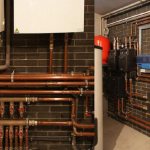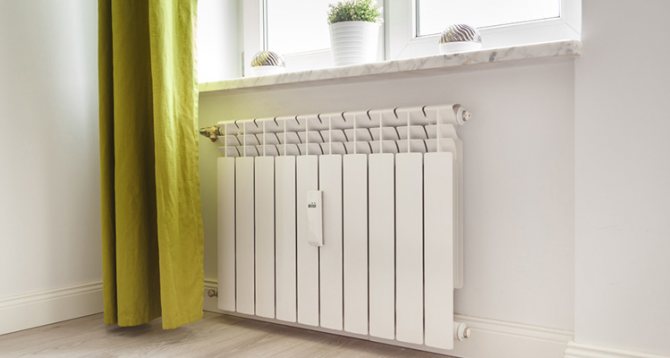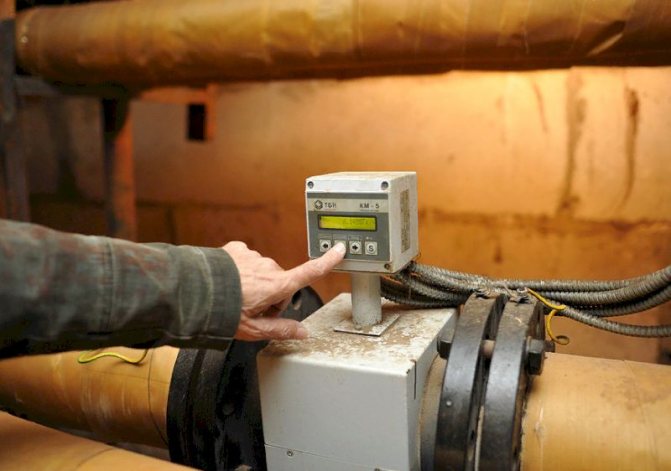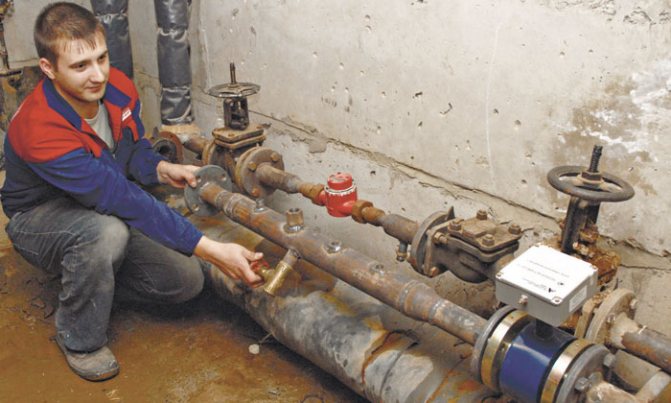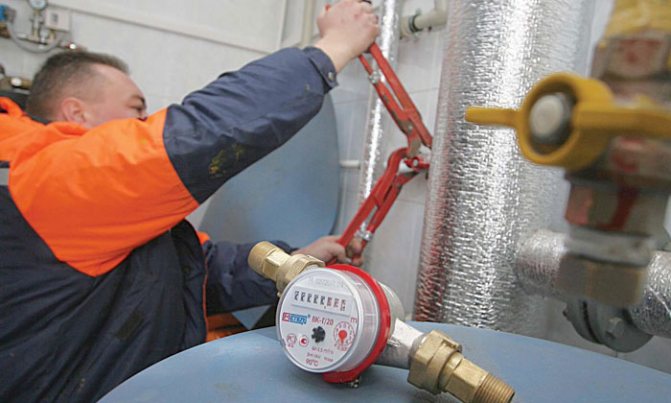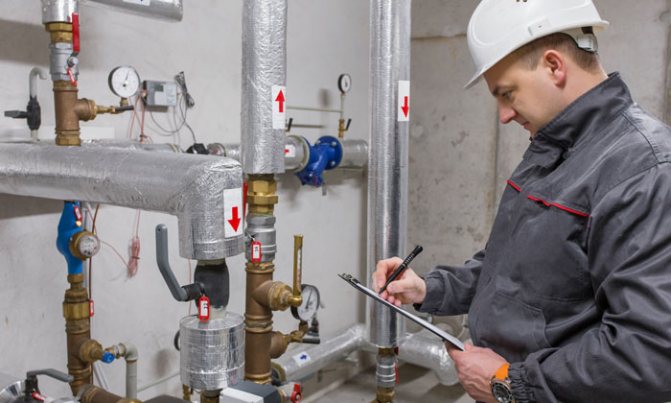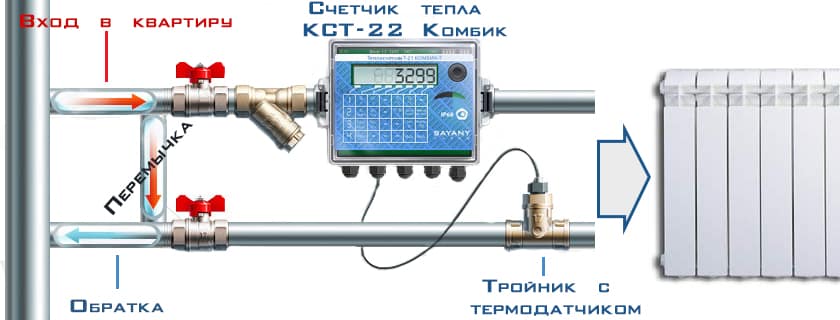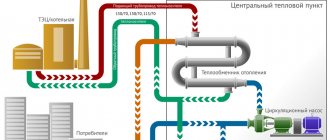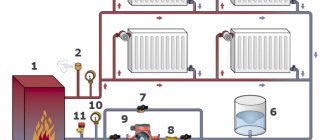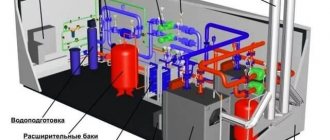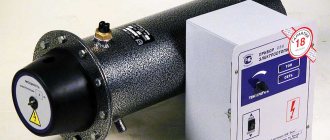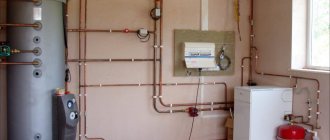The problem of centralized heating is that no matter how hard the tenants try to insulate their apartment, they cannot pay for the actually consumed amount of heat until common house heating meters are supplied to apartment buildings. With the help of various energy-saving resources, it is possible to increase the temperature regime in the apartment, but this will not help to reduce the amount of payment for heat supply. The role of general house heating meters, their varieties and other things will be discussed below.
Household meter: advantages
This mechanism is used to fix the heat supplied directly to the apartment building. What advantages does he possess?
- The main advantage of a common house meter is the financial benefit - the cost of such a device is quite high for the owner of one apartment, but when installing the device collectively, the price is shared among all tenants, which is undoubtedly beneficial.
- Common house metering equipment significantly increases the responsibility of each resident for keeping warm in the building, which helps to reduce damage to common property, such as an unclosed driveway or a split window.
Who installs and where is the heat metering device installed in an apartment building
To install a heat meter, it is necessary to invite housing and communal services specialists or, in agreement with them, employees of an enterprise specializing in this type of work. Payment for the services of such workers is made at the expense of the HOA.
If the partnership is not created, then you will have to collect funds from all tenants. At the same time, almost everyone will have to be convinced of the need for such a meter, its effectiveness and payback period.
You can speed up the process by calling a general meeting of homeowners.
disadvantages
Just like everywhere else, meters have their own disadvantages:
- The main disadvantage of a general house meter is the high cost of equipment and installation, which will have to be paid by apartment owners.
- In the process of use, the meter may fail, and therefore it is necessary to carry out repair work, the cost of which is also paid by the owners.
- If a common heat meter is installed in an apartment building, then the owner of the apartment will not be able to save on payment by reducing heat consumption. The payment for the used heat energy is carried out depending on the area of the heated room.
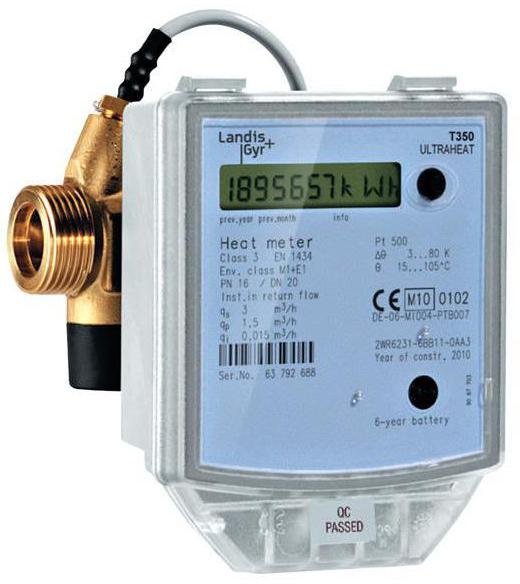
Significance of accounting for consumed heat energy
From the above, it is already clear that any actions aimed at reducing the cost of heating must begin precisely with taking into account energy costs. Until recently, the norms according to which heat supply was paid were the same for everyone and have been in effect since the days of the USSR. Their principle is elementary - the supplier company approved the tariff rate for 1 sq. m, taking into account all costs and profits of the enterprise. The calculation of heating according to a common meter in an apartment building is necessary in order to receive information about the real heat consumption and to pay in accordance with the data provided. Having a common house node, you can start modernizing the house, since the improvement of thermal data will certainly affect the consumption of heat, which will be taken into account by the installations. In addition, the introduction of the node will make it possible to remove heating networks, which previously also had to be paid, since this was included in the tariff.
Important! Installed common house heating meters for apartment buildings enable residents to save from 25 to 40%.
The need to install a heat meter
The fact is that since the summer of 2012, the installation of heating meters has become mandatory throughout the Russian Federation, but the amount of payment will be lower only after a number of measures have been completed, such as:
- High-quality insulation of the building.
- Full glazing of the house.
- Replacement of wooden windows with metal-plastic ones.
- Insulation of the facade of the house with a "fur coat" made of mineral wool or foam.
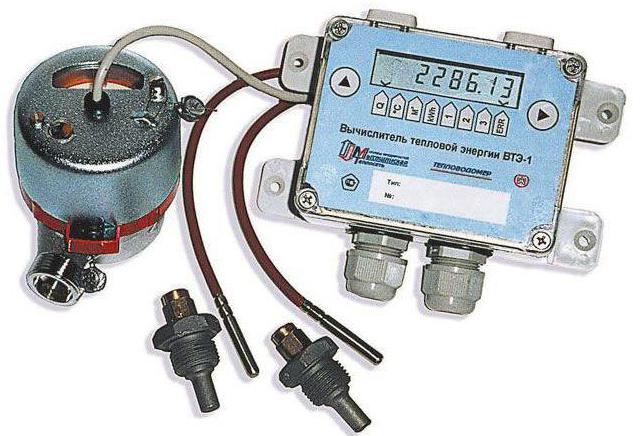

Residents who use the services of district heating need to understand that regardless of whether they consider the installation of meters profitable or not, this does not in any way affect the need for their installation, since in accordance with Federal Law No. 261, apartment buildings must be equipped with meters in mandatory. This law was passed for several reasons:
- Ensure more accurate and fair distribution of payments.
- Encourage apartment owners to use heat supply more economically. Financial leverage is more effective than persuasion. When a person knows that an open front door or a broken glass in the entrance will affect the family's budget, he will be more careful with the common property of the residents.
Now worries about the condition of the house and entrances fell on the shoulders of the apartment owners, and not on the utilities, as before.
Varieties of heat metering devices
At the moment, manufacturers are putting on the market the following types of heat metering devices:
- Heat meters of mechanical type. Their main advantages over other types of heat metering devices are their low cost, as well as their ease of maintenance. They work as follows: the impeller, which is part of the counting mechanism, is influenced by the coolant passing through the device and rotating the impeller at a certain speed. The rotation of the impeller generates a change in the measuring scale, which shows the amount of heat energy that has been used for heating. The disadvantage of such meters is that they are very sensitive to excessively hard water, therefore, in order to prevent the failure of these devices, you need to mount a filter in front of the meter.
- Electromagnetic heat meters operate on the following principle: when hot water flows through the interior of the appliance, it causes changes in the magnetic field. These changes give rise to the movement of the counting mechanism, with the help of which the amount of heat consumed for heating is counted.
- Vortex heat meters measure by analyzing the eddies that appear when a coolant passes through the device. These devices for metering heat energy are currently not very common, since they have a number of weaknesses, for example, they do not work well if there is a lot of air in the pipes, or the water for heating is poorly purified from various solid impurities.
- Heat meters operating on the basis of ultrasound show the least imperfections and structural flaws. In addition, at the moment, no other metering device works more efficiently and more accurately than ultrasonic heat meters. How do they work? When water flows inside the device, the device constantly produces short signals of ultrasound, which passes through the water. The length of time required for ultrasound to travel from the sound source to its receiver shows how much of the coolant has passed through the device.
Who installs the counter
This question can be answered only after studying the legislative acts in force in a particular state.If we talk about the territory of Russia, then the installation of metering devices is strictly mandatory, and many people have a natural question about who should put the general house meter for heating. The task must be fulfilled by the organization supplying heat to residential buildings, and they are also responsible for maintaining and calibrating heat meters until the tenants organize their own association of co-owners.
Important! The organization assumes the main amount of the cost of the equipment and its installation, but in the future these costs will be compensated by collecting additional funds from residents over several years.
Installation of a common house heating meter
You can get information about the possibility of installing metering devices in your management company or in the design office. But you need to take into account the fact that the installation of such equipment is associated with the solution of organizational issues - the owners of some apartments may refuse additional costs.
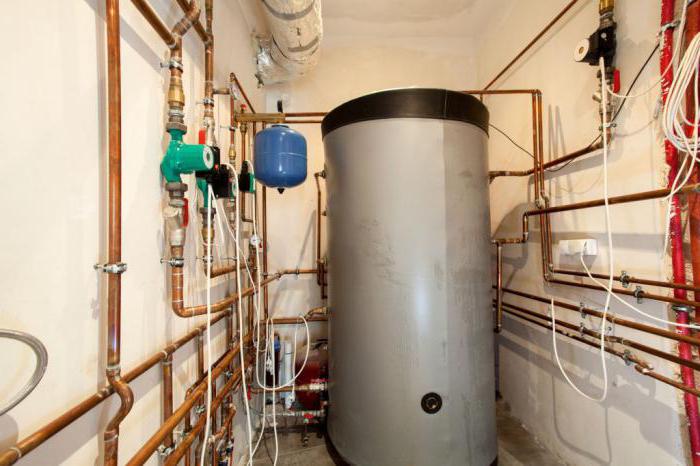

Sometimes general house heating meters are installed for general control over the consumption of heat energy, provided that each apartment has its own meters. In this case, tenants pay according to the meters both in the apartment and in public places (for example, at the entrance).
Pros and cons of common house meters
What is good about installing a common house meter? Firstly, meters in apartment buildings make it possible to fairly distribute the payment for heat. Secondly, they increase the responsibility for the common territory.
Without a counter, it is easy to ignore broken windows in the stairwell. But when you pay for heat loss out of your pocket, it becomes clear that the windows need to be repaired. The same can be said about unclosed entrance doors: this will affect the amount of the heating bill.
You can also look at the counters from a different angle: the insulated facade, solid doors and windows guarantee tangible savings. Installation of a heat meter reduces heat energy costs by 30%. The costs of its purchase, installation and maintenance are repaid in 3 years.
The installation of an individual substation will help reduce costs even more. It regulates the water pressure in the system and controls its heating depending on the air temperature outside. The cost of a heat point is recouped in a year.
But general house meters have drawbacks. Chief among them: the purchase and installation costs are borne by the owners. You will have to spend at least 150 thousand rubles on the counter. If there are many apartments, this amount can be divided into small contributions from each tenant, but the fewer apartments, the more expensive the meter costs for each person. And if the savings from its installation begin in the future, then the costs - here they are, there are right now, so the owners are not enthusiastic about heat meters.
Another drawback: savings are common at home. You cannot reduce the heating in your apartment and thus reduce heating costs.
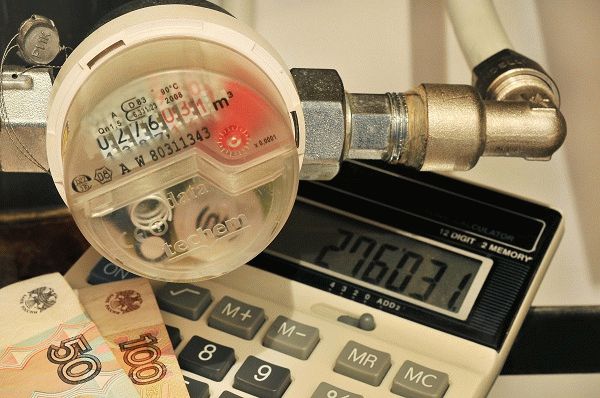

Owners pay for the installation of a heat meter
Installation procedure
First of all, it is required to hold a meeting of residents, where a responsible person is selected who needs:
- Obtain permission from the heat supplying organization.
- Conclude an agreement with a licensed company to carry out design work.
- Based on the project, determine the cost of equipment and its installation.
- Collect funds.
- Coordinate the project with the heat supply company.
- Purchase devices and select a contractor for its installation.
- Put the device into operation.
Disadvantages of collective metering devices
The disadvantages of the innovation in the form of common house heat meters are also enough. The main one is the need to pay for them out of your own pocket.The cost of the meter, the cost of installing and setting it up in full falls on the shoulders of the residents of the house. And we are talking about quite impressive amounts: all this "pleasure" costs at least 150 thousand rubles. Fewer apartments in a house - more money will have to be paid.
In addition to purchasing the device, you must choose a reliable organization that will install it, put it on record; will carry out comprehensive maintenance, and, if necessary, repair the device. Cooperation with dubious offices can result in additional difficulties - primarily material ones. But if you contact a reliable company and order a turnkey installation of a heat meter at your home, you can save yourself a whole load of problems, because its specialists:
- help in registration and obtaining technical specifications;
- develop design and technical documentation;
- agree on the project in the heat supply organization;
- will carry out installation and commissioning works.
Returning to the disadvantages of the equipment, it is also worth noting the lack of opportunity to save money in each individual apartment. "Tighten" the battery to a minimum and pay "penny" will not work. This requires individual metering devices. If the device of the heating system in the house allows the installation of the latter, then this is certainly an ideal option. With them, the principle "how much you have consumed, so much you paid" is absolutely real and the savings can become quite tangible. True, an impressive waste will be required for an individual meter - not everyone can afford it.
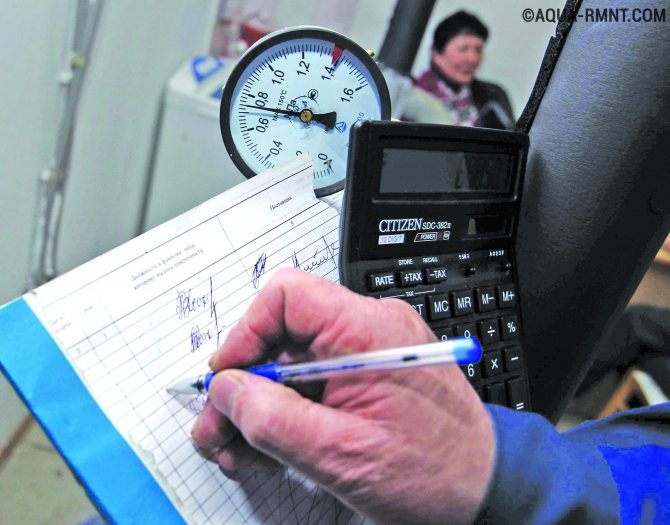

If your apartment is located in a building where the heating system is installed horizontally, you can install an individual heat meter. For buildings with vertical wiring, a general house meter is the only hope for savings
Metering device
Regardless of the type of flow metering units, their principle of operation is similar and looks as follows: an electronic calculator collects information from two sources - a flow meter, which is built into the supply pipeline, and from temperature sensors. Based on the data obtained, the calculator calculates the consumed heat, after which the readings of the general house heating meter are displayed on the screen. In the presence of more complex assemblies, two sources and a pressure sensor are used.
The main types of meters are distinguished, there are three of them:
- Turbine (tachometric). They determine the amount of flowing heating medium using a mechanical impeller contained within the flow.
- Ultrasonic. The heat consumption is measured based on the ultrasonic flow rate of the water flow.
- Electromagnetic. The consumption of heat energy is determined by changes in the magnetic field, which is formed near the measuring section.
Turbine metering devices are the most economical, but at the same time give the greatest inaccuracy. In addition, they require periodic filter cleaning and frequent maintenance. This type of flow meter is very sensitive to the presence of suspended solids in the coolant, creates hydraulic resistance to the flow, therefore it is extremely rarely used as general house heating meters.
Ultrasonic meters are more expensive, but more reliable in operation and more accurately determine the flow. The device does not require frequent maintenance, does not create resistance, but it needs a certain space (a straight section of a set length in front of and after itself). If not quite pure water flows in the pipeline, then the measurement error increases.
Electromagnetic meters also respond to the quality of the supplied water, but only slightly, they do not require direct measuring sections. Such metering devices are mainly used in apartment buildings as collective ones.
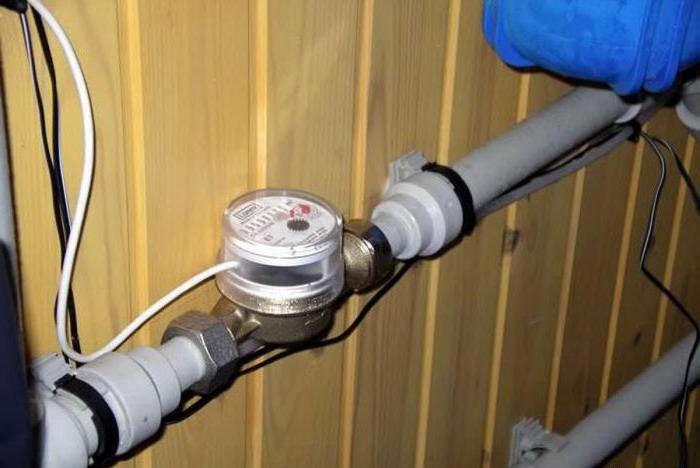

Classification of general house heat meters
Although the equipment for heat metering performs the same function, it uses different principles of operation, has its own design features, and requires adherence to certain specifics of installation and maintenance.
Therefore, you not only cannot, but also do not have the right to select a general house meter on your own. Only competent specialists of the relevant organizations will be able to determine exactly what type of devices is optimal in specific conditions, recommend a trusted supplier, calculate the required amount of additional equipment.
It is useful to know that the following types of meters are used in housing and communal services:
- tachometric;
- electromagnetic;
- vortex;
- ultrasonic.
Tachometric meters are the simplest budget option. They are equipped with mechanical water meters and a heat meter. Their cost is significantly lower than other metering devices. The main disadvantage of such equipment is problematic operation in conditions of increased water hardness. The filter will often clog, and this will naturally weaken the pressure of the coolant: the dubious benefit is obvious. Therefore, tachometric meters are usually chosen for houses and apartments in the private sector. A huge advantage of mechanics is the absence of all kinds of electronic components, which allows the device to function even for a long time in unfavorable conditions (humidity, dampness).
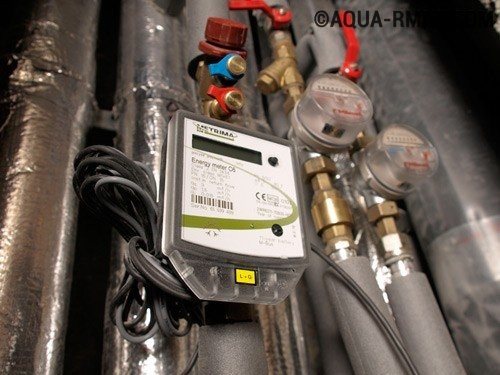

Factors such as the cleanliness of the liquid in the system, the uniformity of pressure, the microclimate of the room in which the measuring device is installed affect the correct operation of the general house heat meter.
Electromagnetic devices are an affordable solution that guarantees high measurement accuracy with high-quality installation and periodic qualified maintenance. Suitable for areas with good water quality, since metal impurities in it can distort the reliability of the device's indicators - upwards.
Vortex meters are easily mounted on both horizontal and vertical sections of the pipeline, display correct indicators under any conditions, have a radio interface that helps to identify malfunctions and take readings remotely - this is probably why service organizations speak very positively about them and recommend, for the most part , to install exactly them.
Ultrasonic metering devices, although they are highly accurate and modern, in practice do not demonstrate particularly high reliability - due to poor water quality, they often quickly fail. In addition, this equipment is very sensitive to welding currents.
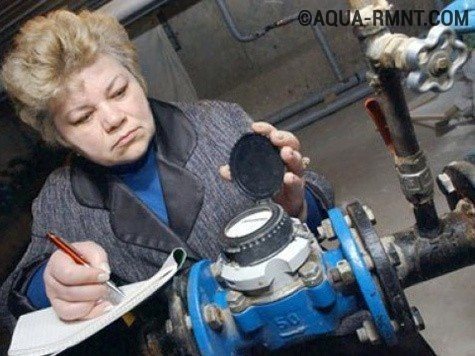

Like any other measuring device, the general house heat meter is subject to mandatory periodic verification. Both the service life of the equipment and the objectivity of the figures in the bills for housing and communal services depend on the quality of service.
Connection and verification of metering device
In order to understand whether the installation of a heat meter is profitable, you need to know the exact cost of the equipment and all associated costs. The price of the equipment depends on the type of flow meter. The final cost includes:
- The device.
- Components for it.
- Installation costs.
Only an organization that has all the permissions required for this has the right to install the meter. After completing all the installation steps, an employee of the company will seal it. Further, it is necessary to calibrate the device every four years. The service is paid. As a result, the costs of installing a heat measuring device increase significantly, but the costs pay off over time due to savings on utility bills.
Who checks the metering device
The new technique has already been tested, this is confirmed by the record on the block, and the information is duplicated in the accompanying documentation. Basic verification is carried out at the factory.At the onset of the next verification period, the owner of the equipment can contact the following organizations:
- In a company that supplies general house heating meters. In most cases, an agreement on further maintenance is drawn up immediately, and the company's employees take care of all the verification issues.
- To the local branch of a government agency that certifies and calibrates measuring equipment.
- To the service center of the meter manufacturer.
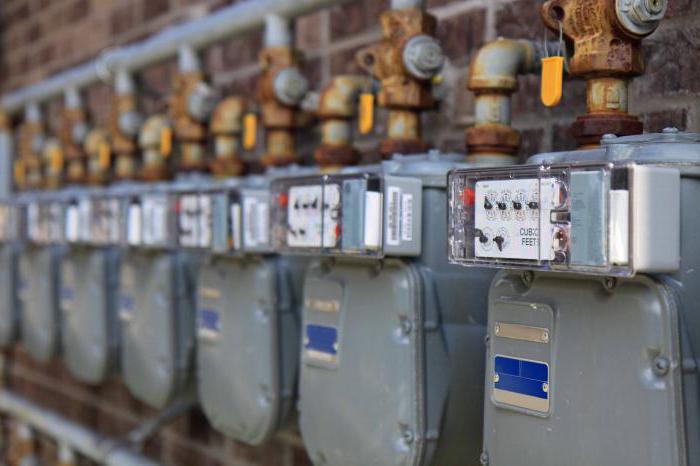

Calculation of heating in an apartment with a general house meter
In this case, charges are made on the basis of meter readings taken over a set time period, usually a month.
In the total consumption of heat energy, the part that falls on your living space is calculated, then it is multiplied by the established tariff. The formula for calculating heating according to the general house meter is as follows:
P = Q total * S / S total * T, where:
- Q total - the volume of consumed heat according to the readings of the metering device in Gcal.
- S total - the area of all residential, vacant and office premises in the house in sq. m.
- S - heated area in sq. m. It does not include balconies, loggias, terraces and verandas.
- T is the heating tariff set in the region.
It is worth noting that the recalculation for heating according to the general house meter should be carried out in any case based on the average temperature regime for the heating season. Then, upon its completion, part of the funds is returned to the tenants as an advance payment for future services or an invoice is issued for an additional payment.
The principle of operation of a heat meter
The heat meter has a wide range of functions. It allows you to determine the period of operation of the devices, which is indicated on a specific metering unit. Also indicates the temperature of the heating medium. But the main thing is to fix the amount of consumed heat energy.
The heat meter circuit includes:
- Thermal converters - temperature sensors;
- Calculator - calculates the amount of heat spent;
- Power supplies;
- The flow meter is a sensor for calculating the volume.
With a heat meter, you can accurately calculate the amount of heat consumed
A heat meter is used to register the heat received, which comes with the coolant. The amount of energy used by the device per hour is determined, taking into account the temperature of the liquid at the inlet and outlet and into the system. This is how the temperature difference is determined over a certain time. For this, a special calculator is provided in the counter.
The calculation of thermal energy has an average error of 3-6%.
The necessary data is supplied by flow and temperature sensors. One temperature sensor must be installed in the flow line of the system and the other in the outgoing one. The calculator analyzes the received data and gives an exact figure of consumption on the screen.
Payment for heating in the summer season
In accordance with the legislation of the Russian Federation, it is allowed to charge heating fees all year round, that is, for 12 months, both in winter and in summer. However, the adoption of these rules depends solely on the local authorities, who have the right to enact them by decree. For example, on the territory of the Russian Federation, two orders are in force in parallel - No. 307 and 354. The first prescribes to make charges constantly, and the second - only during the heating season.
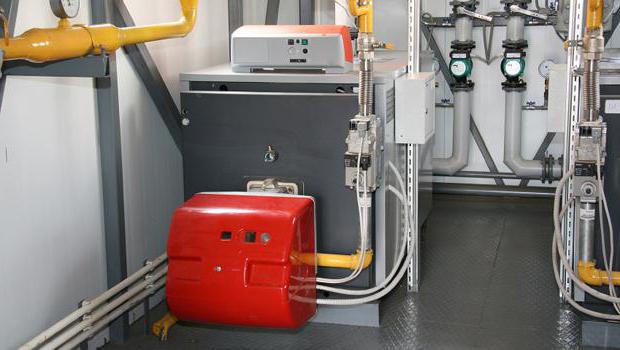

The first method is very simple to implement - the same formulas are used, but the indicators in them are substituted in accordance with the previous year, distributed over 12 months. After that, a recalculation and adjustment of the standards is carried out, which will be applied next year. On the one hand, payment in the summer reduces the amount of the monthly payment for utilities, and on the other hand, it makes the whole system of charges complicated and incomprehensible.
Features of heat meters for heating in an apartment in 2020
Heating is used only during the cold season, and this is when the bills for this utility are the largest.
Typically, the fees for these services are overstated, and to avoid this, heat meters should be installed at home, which will monitor the volume of services received.
Dear Readers! The article talks about typical ways of solving legal issues, but each case is individual. If you want to know how solve exactly your problem - contact a consultant:
APPLICATIONS AND CALLS ARE ACCEPTED 24/7 and WITHOUT DAYS.
It's fast and IS FREE!
This will save on utility bills, but at the same time you need to know what types of meters and their features exist, why they should be installed at all and how much it will cost to the owner of the dwelling.

